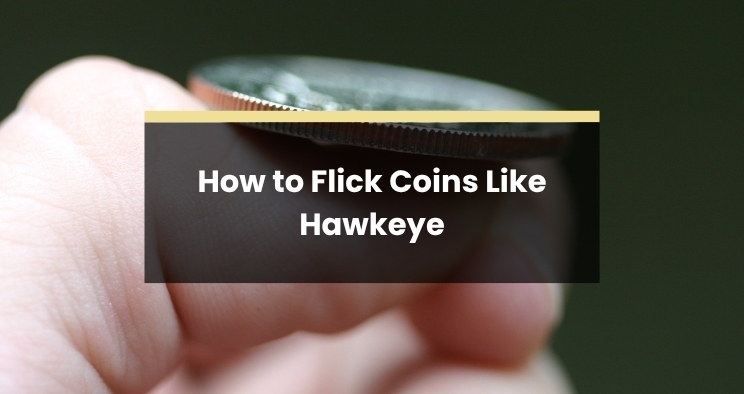Is Google Coin Flip Fair?
Is Google Coin Flip fair? That’s a question many users are asking, especially when relying on this virtual tool to make decisions. From quick everyday choices to serious tie-breakers, people want to know if the result is truly random or subtly biased.
In this article, we’ll dive deep into how Google Coin Flip works, whether it guarantees a 50/50 chance, and how it compares to both physical and other digital coin tosses. We’ll also explore the science of randomness, how pseudo-random number generators operate, and whether you should trust digital tools like this for fair outcomes.
What Is Google Coin Flip and How Does It Work?
Google Coin Flip is a simple, built-in feature accessible directly via search. Type in “flip a coin” or “Google coin flip,” and you’re instantly shown an animated virtual coin toss. With a single tap, the coin lands on heads or tails—no physical coins, no dice, no need for an app.
No App or Installation Needed
One of the biggest conveniences is its accessibility. Unlike dedicated apps or coin flip simulators, you don’t need to download anything or register. It’s powered by Google Search and works on all modern browsers.
A User-Friendly Experience
Visually, the coin spins and lands, simulating the real-world behavior of a tossed coin. But instead of physics, this flip is powered by pseudo-random number generation (PRNG), which we’ll explore further below.
Is Google Coin Flip Really Fair?
Now to the heart of the question: Is Google Coin Flip fair? The answer lies in understanding how randomness is generated by software.
Enter the PRNG: Pseudo-Random Number Generator
Google uses what’s called a pseudo-random number generator (PRNG) to simulate the 50/50 randomness of a coin toss. PRNGs are algorithms that produce sequences of numbers that appear random but are actually generated by deterministic processes.
This means:
- The outcome isn’t influenced by your browser history, location, or time of day.
- The algorithm doesn’t “remember” previous results, ensuring every flip is independent.
- It uses a seed value (like system time or entropy source) to start the sequence.
True Random vs Pseudo-Random
In contrast to true random number generators (TRNGs)—which rely on unpredictable natural phenomena like radioactive decay or electrical noise—PRNGs simulate randomness through logic and math. While not truly random, they’re statistically close enough to serve most practical purposes, including games, cryptography, and tools like Google Coin Flip.
What About Physical Coin Tosses? Are They Really 50/50?
Interestingly, physical coin flips aren’t perfectly fair either. Studies, like the one conducted by Stanford mathematician Persi Diaconis, show that due to minute physical asymmetries and spin patterns, coins tend to land on the same side they started about 50.8% of the time. That’s a tiny bias, but it’s real.
| Type of Coin Toss | Fairness Rate | Source of Bias |
| Physical Coin Toss | ~50.8% | Initial position, air resistance |
| Google Coin Flip (PRNG) | Exactly 50/50* | Mathematical randomness (simulated) |
Assumes high-quality PRNG with sufficient entropy and no manipulation.
So in essence, Google’s Coin Flip may be even more fair than tossing a real coin!
Can Google Coin Flip Be Biased or Manipulated?
Google’s Coin Flip isn’t affected by personalization, ad behavior, or your Google account. It’s also not influenced by your search history. That said, PRNGs do rely on initial seed values to generate results. If the seed were somehow predictable or static, outcomes could, in theory, be manipulated.
But there’s no public evidence suggesting manipulation. In fact:
- The flip feels random, with no visible pattern across repeated flips.
- Every flip resets the generator, preventing pattern recognition.
Conclusion: It’s Functionally Fair
Unless there’s a deep flaw in the algorithm (which would be a PR nightmare for Google), the flips are just as fair as most uses require.
Common Questions About Google Coin Flip
Does Google remember previous coin flips?
No. Every flip is a new event using a fresh PRNG seed. Your outcomes aren’t tracked or stored.
Is the result affected by my device or browser?
Nope. Whether you’re on Chrome, Firefox, Safari, or mobile, the outcome depends only on the PRNG’s behavior—not your device.
Is it safe to use for important decisions?
Technically, yes. For casual or even moderately serious decisions, Google Coin Flip is reliable. But for legal or financial decisions, you might want something with auditability—like certified RNG tools or physical arbitration.
How Does Google’s Tool Compare to Other Digital Coin Flippers?
Here’s how Google’s coin flip stacks up:
| Tool | Randomness Method | User Control | Visuals | Trust Factor |
| Google Coin Flip | PRNG | None | Basic | High (Google) |
| Random.org | TRNG (atmospheric noise) | High | None | Very High |
| GeeksforGeeks Simulator | PRNG (Math.random()) | Basic | None | Medium |
| Mobile Apps | Varies | Medium | High | Varies |
If you want true randomness, platforms like flipacoinonline.com are ideal. But for general use, Google’s simplicity and effectiveness make it the most popular.
Why Use a Digital Coin Flip at All?
- Convenience: No need to carry or find a coin.
- Bias-Free: No chance of influencing outcome with hand technique or spin force.
- Instant Access: Just a Google search away.
- No Wear and Tear: Physical coins can degrade, get bent, or lost.
Final Verdict
Yes—Google Coin Flip is fair for all practical purposes. Using well-designed pseudo-random algorithms, the tool simulates a perfect 50/50 outcome. It’s unaffected by personal data, previous flips, or user location.
Although true randomness (like that from atmospheric noise) technically offers better unpredictability, Google’s method is statistically sufficient for most use cases. And considering that real coins themselves aren’t perfectly fair, this digital version might even have the edge.
So the next time you’re debating between pizza or tacos, or need a quick decision-maker, go ahead—trust the flip.






